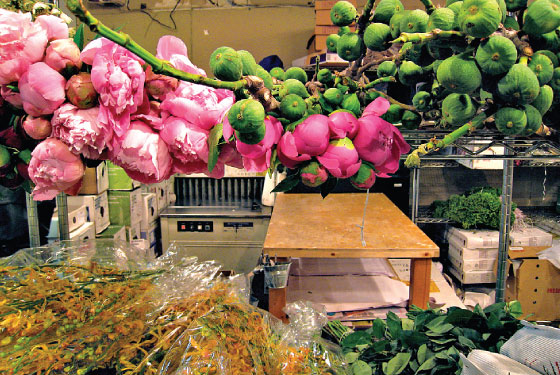
The rent squeeze has reduced the once-multiblock flower district to a small stretch of 28th Street between Seventh Avenue and Broadway. In 1990, there were about 50 plant and cut-flower wholesalers; now there are approximately fifteen. And time may soon be winding down for the holdouts. Five years ago, says Richard Walker of Foliage Garden (120 W. 28th St., nr. Sixth Ave.; 212-989-3089), rent for a 500-square-foot store would’ve been $7,000 a month. “Now, it’s about $15,000—and that’s not a lot,” he says. Those prescient enough to have bought their spaces long ago—say, in pre–Whole Foods Chelsea—are able to stay, as are wholesalers with long-term leases.
The Flower Market Association, formed in the eighties, has made numerous attempts to stay where it is. One plan involved installing cobblestones and ornate street lamps to make it a destination neighborhood. Other proposals had the market moving en masse to the South Bronx or Harlem, but members feared they’d lose foot traffic. Occasionally they’d agree on a site (near the High Line in one case) but lose out to a sexier tenant, like the Dia:Chelsea museum.
The flower district’s woes aren’t solely owed to real estate. The Greenmarkets, wholesalers who truck in flowers, and Internet-only stores are siphoning off revenue. Sons and daughters of many of the mom-and-pops aren’t going into the family business. “There’s no one to wake up at 4 a.m. to open up shop,” says Victor Rallis of George Rallis (803 Sixth Ave., nr. 28th St.; 212-989-4747), which has been in the district since 1948. A newly dense neighborhood has made it a hassle for customers to park and shop. And rising fuel costs are constantly eating into profits.
But there are upsides to doing business the new way. Modern shipping systems have extended the wholesalers’ reach—Fischer & Page, Ltd. (150 W. 28th St., nr. Seventh Ave.; 212-645-4106), for instance, does a brisk business with destination weddings—and Websites allow them to show off their inventory to far-flung customers. And in a city that puts a high premium on aesthetics, there will always be a need for a flower market where event planners and high-end florists can size up the merchandise. “It’s so important for our buyers to put their noses to the flowers,” says Belle Fleur’s Meredith Waga Perez.